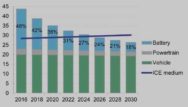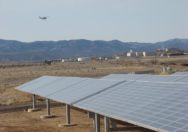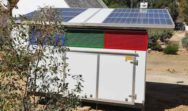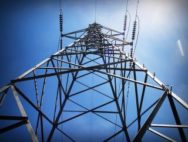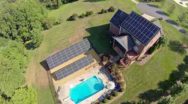
Never leave full batteries
I planned to install batteries to backup to the rooftop PV system and for years have had misleading advice from many sources. I always thought I could simply add a whole heap of batteries and then if there was a power outage I could switch to the batteries. But there are two reasons why this is not so. One is that in the event of an outage the system has to protect power workers who are fixing the lines.
another reason was explained by an electrician (Tom) from Caloundra who phoned and educated me on batteries for home use:
There are two types of systems, full off the grid where the mains power is cut from the home or a hybrid system where you remain connected to mains powers with batteries that charge from PV panels, and, when fully loaded the surplus is fed back into the mains grid.
The batteries then supply your night needs, if not enough DC to AC from batteries then I suppose the mains kick in.
Most suitable for those homes not supplied with reliable mains power like most regional rural properties.
Based on this information provided by a sparky on the Coast my idea of backup with crossover switching when power is off/on is not available but could be rigged, it is not an off the shelf system.
However, the advice is that maintaining a fully-charged battery that may not be used for months or over a year is not economical as all batteries require cycling.
Discharge then charge to get the maximum life from the battery.
Let’s say it cost $5000 to install a backup battery system that is not used for 18 months the battery by that time may have collapsed or does not hold its max capacity.
So my idea of auto-switching to the battery when grid power ceases and back when supply is resumed is doable, it is not recommended.
The alternative suggested to me is to have a crossover system for a 240v AC generator of about two or five kVa output that will allow me to use all appliances that I do not have.
So please keep in mind that batteries with PV are not recommended for suburban installation. Use a generator, it is cheaper and less hassle.
I hope this helps others who have been thinking of an outage backup battery system.…


